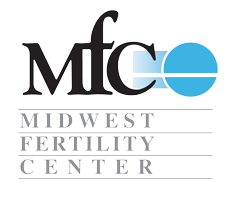For many individuals, understanding their fertility cycle is crucial, whether they are trying to conceive or simply want to gain a deeper understanding of their reproductive health. The fertility cycle is a complex process that involves various hormonal changes and physiological events. In this blog, we will explore the different phases of the fertility cycle, discuss key indicators of fertility, and provide tips for tracking and optimizing your reproductive health.
1. The Menstrual Phase:
The fertility cycle begins with the menstrual phase, which marks the start of a new cycle. During this phase, the uterus sheds its lining, resulting in menstrual bleeding. On average, this phase lasts between three to seven days. It is important to note that the length and regularity of menstrual cycles can vary from person to person.
2. The Follicular Phase:
Following the menstrual phase, the follicular phase begins. This phase is characterized by the growth and maturation of follicles in the ovaries. Follicles are small sacs that contain eggs. As the follicles develop, they produce estrogen, which stimulates the thickening of the uterine lining. The follicular phase typically lasts around 10 to 14 days, but it can vary.
3. Ovulation:
Ovulation is a crucial event in the fertility cycle. It occurs when a mature egg is released from the ovary and travels down the fallopian tube, making it available for fertilization. Ovulation usually takes place around the middle of the menstrual cycle, approximately 14 days before the start of the next menstrual period. Some common signs of ovulation include increased cervical mucus, a slight increase in basal body temperature, and mild pelvic pain.
4. The Luteal Phase:
After ovulation, the luteal phase begins. During this phase, the ruptured follicle transforms into a structure called the corpus luteum, which produces progesterone. Progesterone helps prepare the uterus for potential implantation of a fertilized egg. If fertilization does not occur, the corpus luteum breaks down, leading to a decrease in hormone levels. The luteal phase typically lasts around 12 to 16 days.
5. Fertility Awareness Methods:
Understanding your fertility cycle can be empowering, especially if you are trying to conceive or avoid pregnancy. Fertility awareness methods (FAMs) can help you track your cycle and identify fertile and non-fertile days. Some common FAMs include tracking basal body temperature, monitoring cervical mucus changes, and using ovulation predictor kits. These methods can provide valuable insights into your reproductive health and help you make informed decisions.
6. Optimizing Your Fertility:
If you are trying to conceive, there are several lifestyle factors that can positively impact your fertility. Maintaining a healthy weight, eating a balanced diet, exercising regularly, managing stress levels, and avoiding smoking and excessive alcohol consumption are all important steps to optimize fertility. Additionally, it is crucial to ensure that you and your partner receive regular check-ups and address any underlying health conditions that may affect fertility.
Understanding your fertility cycle is a valuable tool for anyone interested in their reproductive health. By familiarizing yourself with the different phases of the fertility cycle and tracking key indicators, you can gain insights into your fertility patterns and make informed decisions. Whether you are trying to conceive or simply want to understand your body better, knowledge about your fertility cycle empowers you to take control of your reproductive health. Remember, every individual’s fertility journey is unique, and seeking guidance from healthcare professionals at Midwest Fertility Center https://mfcfamily.com/ can provide personalized advice and support.

